Let me give this statement some context – I am referring particularly to the 2nd half of the summer term when the cumulative end of year testing and record keeping demands hit their highest level.




Let me give this statement some context – I am referring particularly to the 2nd half of the summer term when the cumulative end of year testing and record keeping demands hit their highest level.

As we begin the 2nd half of the summer term we are confronted by 4 scenario’s…

It’s a question that I get asked many times…
“How do I develop my career in school?” or ” how long do I have to wait before I can move up in responsibilities and pay?”

Now this may not be a problem with your class – but for other colleagues it may well be.
It can be one or two individuals or groups or even the whole class that seemingly cannot just go out to play at break or lunchtime without causing problems.
You may say “there are staff on duty who can deal with things,” and yes that’s correct, but only to a point. So where does the problem lie and just who needs to sort things out?
For the majority of the time the staff on duty are more than capable of dealing with everything that happens when the children are outside. Small arguments, accidents and even minor mediation are all dealt with quickly and easily and the majority end there. If there is anything that needs to be passed on to you as the class teacher then they will pop into your classroom after the break or catch you as the children line up.
But let’s just say for arguments sake that your class has a few “characters” in it, that can potentially cause some upset if given the chance….I think that’s a polite way of putting it – don’t you? Through your classroom management and behaviour management strategies their behaviour in class if fine and a gentle reminder every now and then keeps them in line. That’s how it works – both sides (you and the child / children) know and understand the status quo and at the end of the day they know who’s running the show!
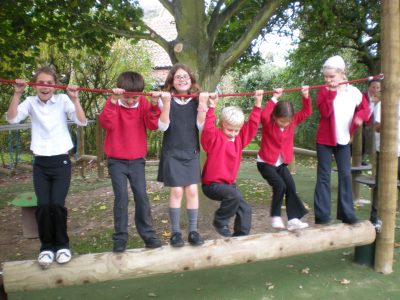
Once outside, certain children have the potential to cause problems for the staff on duty – some more regularly than others. So what can be done and just how far do we, as class teachers, have to be involved?
It really does depend on 2 things:
In most Primary schools there will exist a school behaviour policy – whether this is active and working well really depends on the school. In most cases (but not all) the behaviour policy is an over arching statement that brings together the principles of behaviour expectations but does not go into individual class interpretations. So in reality we have each class making their own interpretations of the policy but under the umbrellas of the main school statements.
The right and wrong approach:
It is absolutely right and correct that any member of staff at a school can deal with a problem of behaviour or situation that they may encounter during the school day. It is also correct that this should apply to any pupil within the school. So for example if a child from another class is running down the corridor then I would expect any teacher to stop the child and speak to them. Likewise if a problem occurs in the dining hall or playground then I would reasonably expect a member of staff (and that includes T.A’s) to deal with the problem and if necessary report it to the class teacher.
(Of course for serious situations the reporting level can move immediately to senior management level.)
In the course of events, most problems can be dealt with easily and without recourse to the class teacher. However for persistent offenders(I sound like the hanging judge here!) or a more serious incident then the matter will be reported to the class teacher who can deal with the matter.
The wrong approach (in my opinion):
I say this as it always used to annoy me slightly when this happened.
When something has happened outside and the colleague has dealt with the matter but has imposed a sanction on the child and then tells me about it. The thing that used to annoy me was when the sanction involved me! So I would be told ” Peter was behaving badly at lunchtime today so I told him he can miss 10 minutes of tomorrows lunchtime!”….hang on who is going to have to supervise this – I have just been committed to keeping Peter in for an incident I have not seen or judged – or, as another example, when the punishment is way over the top for the incident and then I am being expected to enforce it!
We used to have a music specialist who came into school – my class at the time were quite a good class but would always mess about when he arrived. His problem was that he had no idea about class control but would throw sanctions out like confetti. At the end of the lesson I would be committed to keeping in 7 or 8 children because of his useless class control. In the end I gave up and took some work into the class and sat at the back to “ride shotgun!”
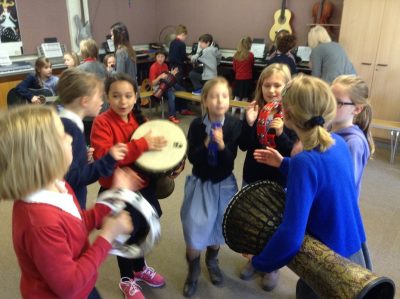 (I put this in as a tribute to all music specialists and no this is not one of his lessons!)
(I put this in as a tribute to all music specialists and no this is not one of his lessons!)
Working together:
The person who knows your class best is you – you have a special relationship with all members of your class and all pupils know and understand the levels of expectation that you have set for both work and behaviour. In order for these expectations to extend beyond the classroom you have to work effectively with all colleague’s in the school. The way in which you work can be different for each and every one of them and only you will know what works for both you and them. For some colleagues you will know that you are happy for them to place a sanction on a pupil for something that has happened. You know this is ok because you know both the experience and approach of that person and they, in turn, know how things operate in your class and also your expectations. For others it is perhaps best to ask them to report to you any misdemeanours that may occur …either immediately or following the break. In these cases let the member of staff know that the matter will be dealt with (and I always informed them as to what I had imposed) and to thank them for bringing it to your attention.
Ultimately the responsibility for the behaviour of your class is down to you – whether this is in the classroom or during playtimes, lunchtimes or even with supply teachers. Children should see staff at school as working together and learn to respect all staff in whatever interactions may occur. It is up to you as the class teacher to make sure that happens for your class and that you are seen to support colleagues at all times – in this way the school and staff present a united front to both pupils and parents and that’s the way it should be.
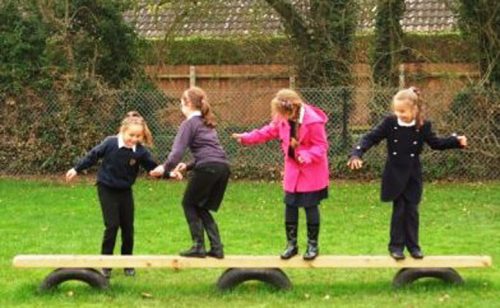

Lets just take a quick re-cap of where we finished the 1st article and then pick things up and move on from there.

Firstly let me say that I like school dinners – well, not all options offered in school dinners ….pink custard I especially hate! But the great thing about being a teacher having school dinners is “you can’t be told to eat it.”

Is it possible to integrate older reading books into our class library and reading scheme or should we just be throwing them out?
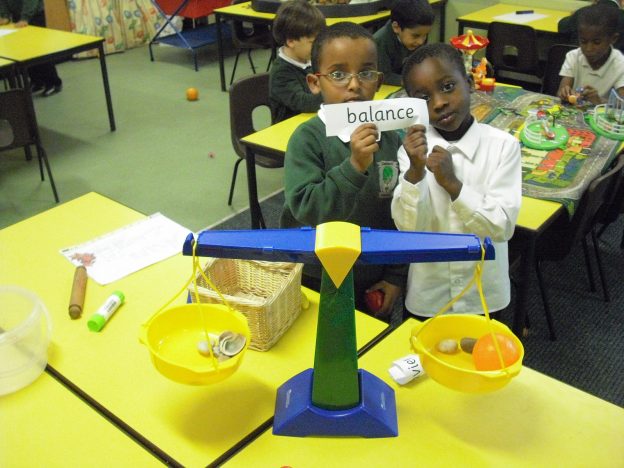
Well in actual fact I am often teaching 3 maths topics at one time – but before you ask, no there are no carousel arrangements, no smoke and mirrors and I don’t magically appear in hologram form at various points in the classroom!

I have to say I can’t write about this subject without a smile on my face – so don’t expect a scientific analysis in anything I write!

I visited a school a couple of weeks ago and they were obviously having a bit of a clear out – there was a skip at the side of the school full of rubbish and on top I was surprised to see some whiteboards…nothing wrong with them just surplus to requirements! I have to say I was tempted to ask for one!
With the almost total fitting of Smart boards of every type and brand in classrooms it seems that the days of the whiteboard are numbered – well they certainly were in this school! But is it really progress to get rid of them altogether or do they still have a place in our classrooms?
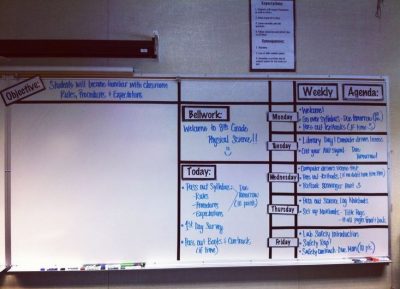
I like a whiteboard – there I have said it….no I really do, and I am not convinced that removing them from classrooms is a good thing. So let me explain my argument –
Now I am not saying that I dislike smart boards (for want of a generic name) – I understand their versatility and all the exciting options that they bring. But they do bring with them some disadvantages and limitations and I am never too sure about the health aspects of large TV screens being on all day! ( I have written about this in another article – linked below)
http://pp.distractweb.co.uk/2016/11/18/class-screens-what-do-we-see-in-them/
However lets consider some of the advantages of whiteboards and why I like having one in a classroom.
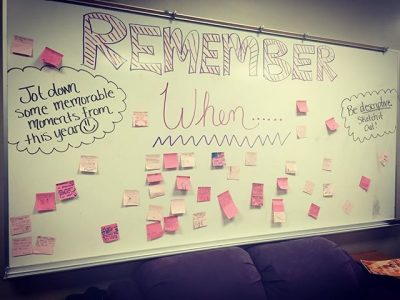

As you can no doubt tell by now, I like having a whiteboard in my classroom – I certainly always had a whiteboard in my HT’s office and I even have a whiteboard in my kitchen at home!
But in saying this about whiteboards does not mean I am not in favour of smart boards in classrooms. In fact quite the opposite. The inclusion of these type of boards brings with it new and exciting elements and experiences to the education of the children and allows teachers to use the vast array of resources available both from the internet and also specific to the technology itself.
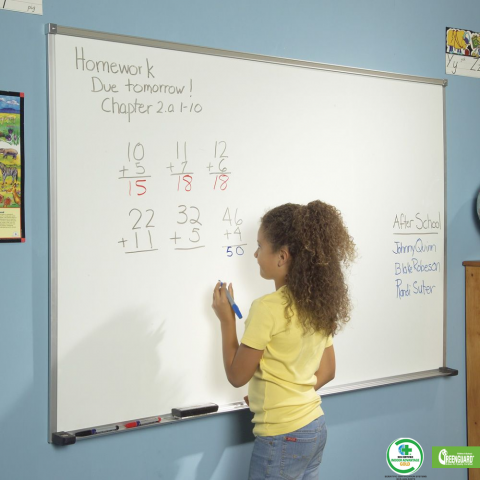
But and it’s a big but – in my opinion it is a mistake to replace whiteboards with the new smart boards. There is a definite place in the classroom for both these resources and it should not be a choice of one at the expense of the other.
Many schools are now starting to realise this and I know of 3 schools who have bought new whiteboards to replace those they had previously removed.

With a bit of careful planning and rearrangement both can be productively used in both extending and consolidating the classroom learning experience.
